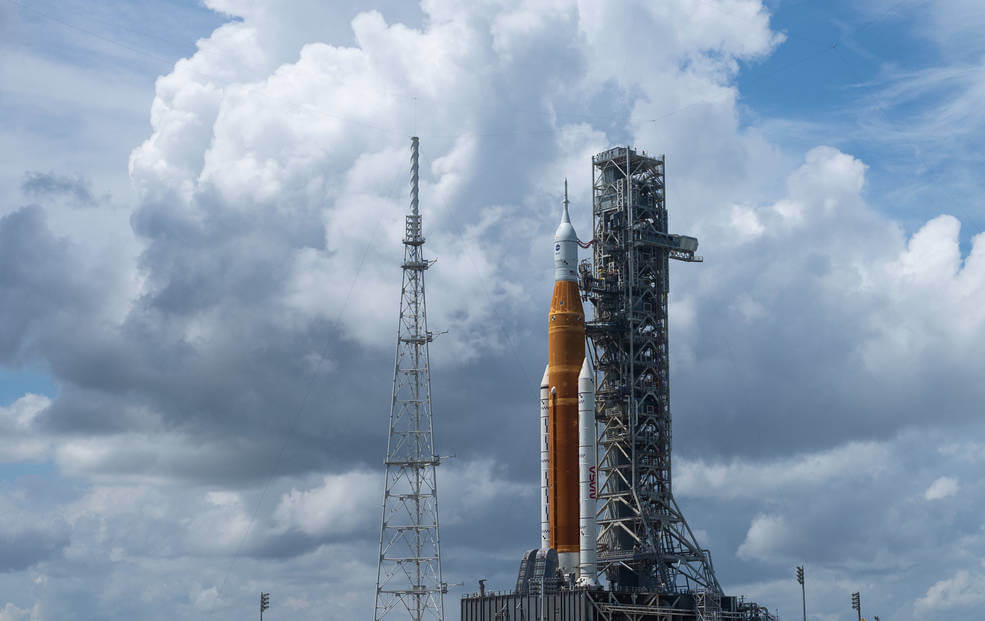Daniel Adibi ’26
On August 29, crowds gathered at NASA’s Kennedy Space Center launch site in Cape Canaveral, excited to witness America’s first flight to the moon since the last Apollo mission 50 years ago: the Artemis I launch. Viewers, however, were disappointed when the launch was unexpectedly aborted due to a leak in one of the engines. It was postponed to a later date only to be canceled again twice. What exactly is the Artemis mission, and after three failed attempts, will it finally succeed?
Artemis I is the first in a series of launches in the Artemis program, which is intended to reignite America’s exploration of the moon, collect important lunar data, and land an American astronaut on the moon for the first time in 50 years. Artemis I is an unmanned mission that will serve as a test template for the other missions of the Artemis program. The spacecraft will fly using the most powerful rocket in the world, travel further from Earth than any other spaceship designed to hold humans has traveled, and follow a 1.3 million mile course over four to six weeks. Mason Jiang ’26 believes that “the mission is an amazing concept because it adds to our [humanity’s] progress in space exploration.” Jiang is excited “to see what new technologies and scientific breakthroughs this mission and space exploration will provide.”
According to NASA, traveling back to the moon is very significant. In NASA’s official press release, they explain that they are “going back to the moon for scientific discovery, economic benefits, and inspiration for a new generation of explorers.” During the span of the Artemis program, NASA aims to land the first woman and person of color on the moon. NASA plans to break barriers in gender, race, and most importantly, space exploration.
Middle School science teacher Stephen Kerwin explains, “We have dreams and plans to send people beyond our moon, but going back to the moon is a great first step in this journey. Doing this will better enable us to send humans further away from Earth than they’ve ever been before, including Mars and maybe even to places like Europa, a very intriguing moon of Jupiter, one day.” Traveling to Mars and returning to Earth would take nearly 2 years to complete for the shortest possible mission. However, a round-trip to the moon can take as little as a week. Learning processes for exploring new worlds will enable much greater leaps towards space exploration.
In addition to the cancellation on August 29, the mission was also aborted on September 3 for similar reasons and, recently, on September 27 due to inclement hurricane weather. These constant delays have caused people to wonder if the Artemis mission will be a success and if it is even worth it given the taxpayer-funded astronomical costs to launch it. There have already been multiple failures in the engines and, according to space.com, estimates put the total cost of the program at 93 billion dollars.
However, many are hopeful for the future of the launch and what it will teach humanity. Kerwin believes that “humans are a rather resilient species, and when we put our minds and efforts into something, we truly can achieve great things.” Upper School physics teacher Dan Baxter agrees with Kerwin, saying, “It’s always important to bear in mind the human impact of science that takes place. If a greater number of young people are inspired to continue in STEM due in part to the Artemis program, then it benefits us all.”

Photo Courtesy of www.nasa.gov
Looking ahead, Artemis I will also provide important information about future space exploration and potential planetary colonization. “Looking long-term into the future, it is clear that humans will not always have Earth to live on… If we have any hope for the human species to live long into the future, we must become space-travelers,” comments Kerwin. The Artemis I launch is one of the first steps towards this long-term goal but a very important one. It will map out future Artemis missions, reignite interest in the topic, and inform any future space endeavors.